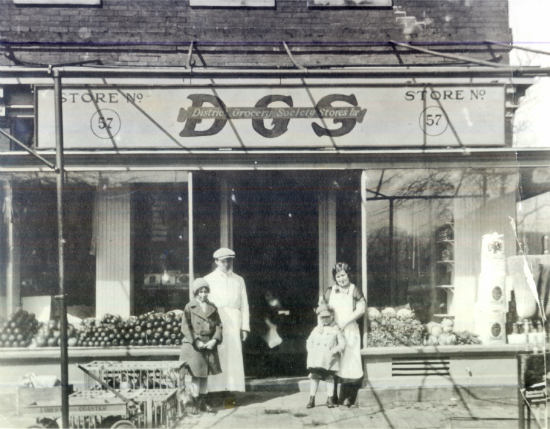History has a way of repeating itself. I'm not the first to say it; theoreticians have posited this for hundreds of years.
Most of Washington's history never gets told, lost in the bigger historical events that define our city. But it certainly repeats itself.
One story that is repeating itself today captures how we Washingtonians fed our families and stocked our pantries nearly a century ago. In the early 1900's, the District was built around central markets: Eastern, O Street and Union Terminal. Vendors congregated at the markets to sell their local wares.
As the population moved outwards to the periphery of the city, small mom-and-pop stores (many of which were Jewish owned) emerged to capture this nascent market. The small independent shops -- much like the young food entrepreneurs of today -- had little buying power, and had to scrap by to survive.
So in 1922, a dozen stores banded together to form District Grocery Stores. The fledgling businesses represented strength in numbers, and leveraged their new-found buying power to cut costs.
The cooperative exploded over the next several decades. At its peak, there were over 300 District Grocery Stores across the city, one of the largest cooperative grocery chains in the country. Every shop had a specialty. Every shopkeeper had a personality. And they all worked to connect customers to the merchants who provided the food for their families.
Then came the birth of the big chain groceries, the behemoth supermarkets that anchor our strip malls today. The first "self-serve" Giant opened in 1936. Before long, competition from the big grocers stifled the corner stores.
The DGS cooperative dissolved in 1972 and the commoditization of food from factory-to-shelf became the new paradigm.
Until history repeated itself.
The resurgence of food entrepreneurs -- food trucks, retail shops, neighborhood restaurants- embodies the same spirit that sparked the creation of DGS nearly a century ago. Now, the grandchildren of the original shop owners (disenfranchised by the corporate job landscape and rejecting the ever industrializing food market) are making a triumphant return to mom-and-pop food businesses.
And the central markets are all being relaunched and filled with high quality vendors. Eastern Market was rebuilt three years ago. Union Market is opening its doors this summer. And the City Market is under development now. Vendors are returning to sell their wares to the growing urban population.

Photo Courtesy of The Jewish Historical Society of Greater Washington
The District foodscape is starting to look an awful lot like it did in the 1920's, returning to its culinary roots and becoming a food capital yet again.
This summer, my partners and I are opening a craft Jewish delicatessen in Dupont Circle: David Wiseman, whose family once owned a DGS grocery; and chef Barry Koslow who hails from a third generation Washington family.
We've decided to call the place DGS Delicatessen, a nod to the spirit of our grandparents' generation. We will be bringing, curing, and smoking all of our meat and fish in-house, inspired by the butchers, craftsman and grocers of our namesake. Our delicatessen will be a place to savor big flavors, gather friends together, dine well and drink hearty.
The vision that put a DGS grocery store on virtually every corner lives on, as seen through the food renaissance that is sweeping our city. We're eager to play our part in honoring and sustaining that legacy at DGS Delicatessen.